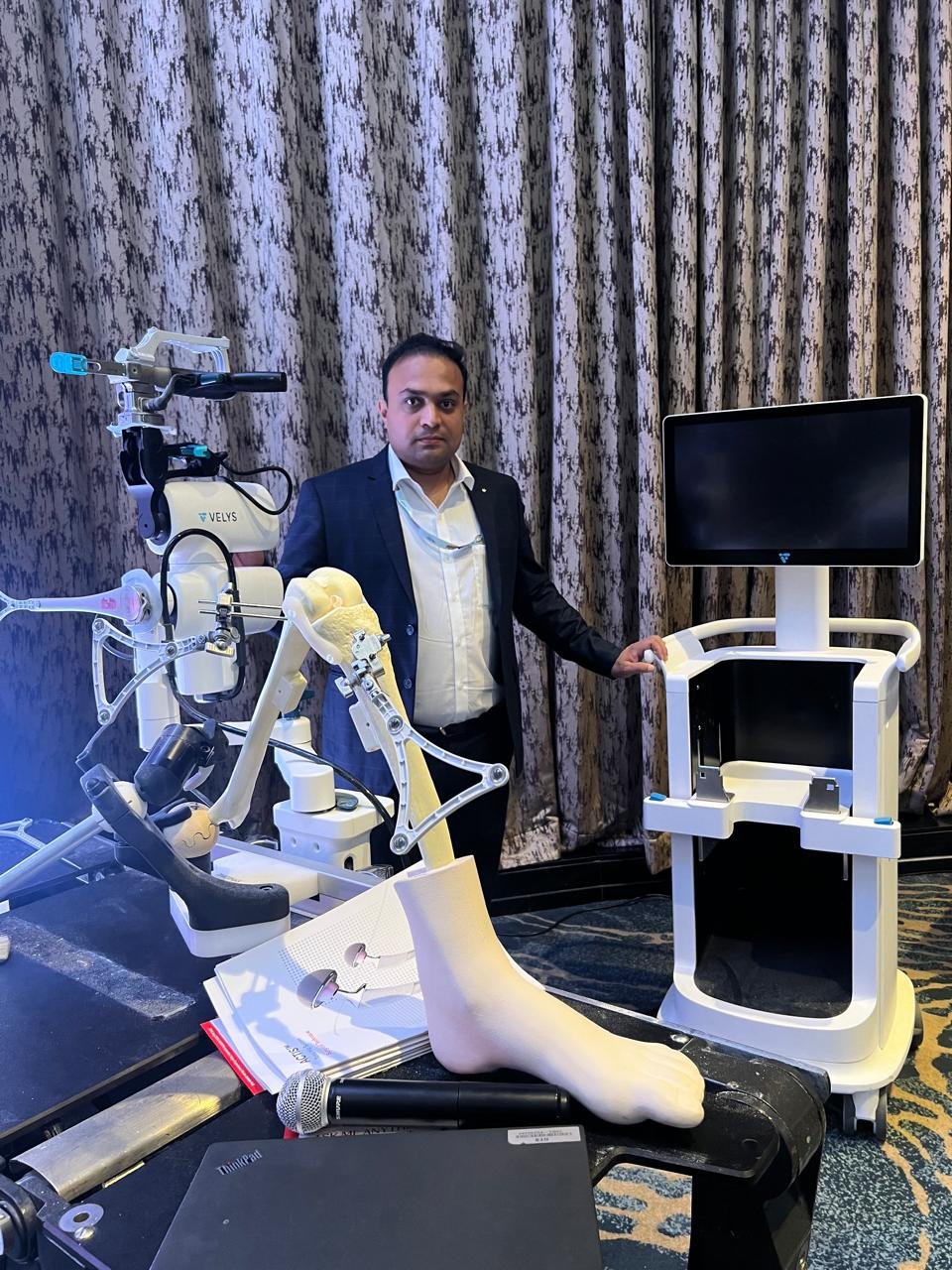Meet Our Doctor

Dr. Prajaktam M. Lende
ORTHOPAEDIC & JOINT REPLACEMENT SURGEON
Fellowships
- Navigation Based Joint Replacement Surgery (Hip & Knee Arthroplasty)
- Arthroscopy & Sport Medicine
- Ilizarove Surgery
- Observer Ship in Pediatric Orthopaedic Surgery (Wadia Hospital, Mumbai)
Knee Arthroscopy In Nagpur
Home / Knee Arthroscopy In Nagpur

Knee Arthroscopy
Knee arthroscopy is a surgical treatment that permits doctors to look at the ginglymoid joint while not creating an oversized incision (cut) through the skin and alternative soft tissues. surgery is employed to diagnose and treat a large vary of knee issues.
throughout knee surgery, your doctor inserts alittle camera, referred to as AN endoscope, into your ginglymoid joint. The camera displays photos on a video monitor, and your doctor uses these pictures to guide miniature surgical instruments.
Because the endoscope and surgical instruments ar skinny, your doctor will use terribly tiny incisions, instead of the larger incision required for open surgery. This leads to less pain and joint stiffness for patients, and infrequently shortens the time it takes to recover and come back to favorite activities.
Anatomy
Your knee is that the largest joint in your body and one in all the foremost complicated. The bones that conjure the knee embody the lower finish of the thighbone (thighbone), the higher finish of the shin (shinbone), and therefore the patella (kneecap).
Other necessary structures that conjure the knee joint include:
Articular animal tissue. The ends of the thighbone and shin, and therefore the back of the patella ar lined with body part animal tissue. This slippery substance helps your knee bones glide swimmingly across one another as you bend or straighten your leg.
Synovium. The ginglymoid joint is enclosed by a skinny lining referred to as tissue layer. This lining releases a fluid that lubricates the animal tissue and reduces friction throughout movement.
Meniscus. 2 wedge-shaped items of meniscal animal tissue between the thighbone and shin act as shock absorbers. totally different from body part animal tissue, the cartilage is hard and rubbery to assist cushion and stabilize the joint.
Ligaments. Bones ar connected to alternative bones by ligaments. The four main ligaments in your knee act like sturdy ropes to carry the bones along and keep your knee stable.
The two collateral ligaments ar found on either facet of your knee.
The two cruciform ligaments ar found within your ginglymoid joint. They cross {each other|one ANother} to create an X with the anterior cruciform ligament ahead and therefore the posterior cruciform ligament in back.
Description
Three differing kinds of pain relief (anesthesia) is also used for knee surgery surgery:
Local anesthesia. Your knee is also numbed with pain drugs. you will even be given medicines that relax you. you’ll sit up.
Spinal physiological state. this can be conjointly referred to as regional anaesthesia. The pain drugs is injected into an area in your spine. you’ll be awake however won’t be able to feel something below your waist.
General anesthesia. you’ll be asleep and unpainful.
Regional nerve block (femoral or adductor muscle canal block). this can be another form of regional anaesthesia. The pain drugs is injected round the nerve in your groin. you’ll be asleep throughout the operation. this sort of physiological state can block out pain so you wish less general anaesthesia.
A cuff-like device is also place around your thigh to assist management haemorrhage throughout the procedure.
At the tip of your surgery, the saline are going to be drained from your knee. The doctor can shut your cuts with sutures (stitches) and canopy them with a dressing. several surgeons take photos of the procedure from the video monitor. you will be able to read these photos when the operation so you’ll see what was done.
When is this operation helpful?
There are two main reasons to have a knee arthroscopy:
To repair or remove damaged structures in the knee. This may include removing torn pieces of cartilage or meniscus (the knees shock absorbers), removing loose pieces of cartilage or bone, repairing a torn meniscus or damaged cartilage or cleaning out infection within the knee joint
To confirm the clinical diagnosis and to assess the quality of the remaining structures inside the knee joint. This is not a common reason to undergo knee arthroscopy surgery
Complications
The complication rate after arthroscopic surgery is very low. If complications occur, they are usually minor and are treated easily. Possible postoperative problems with knee arthroscopy include:
- Infection
- Blood clots
- Knee stiffness
- Accumulation of blood in the knee
- Bruising or swelling
Recovery
After surgery, you will be moved to the recovery room and should be able to go home within 1 or 2 hours. Be sure to have someone with you to drive you home and check on you that first evening.
While recovery from knee arthroscopy is faster than recovery from traditional open knee surgery, it is important to follow your doctor’s instructions carefully after you return home.
Best AVN treatment In Nagpur
Dr. Prajaktam Lende is a trusted Orthopedic doctor In Nagpur. Top joint Replacement surgery Doctor in Nagpur. Book an Appointment with Dr Prajaktam M. Lende, one of the prominent orthopaedic surgeon specialised in Joint Replacement surgery and ligament Reconstruction surgery Dr Prajaktam M. Lende at Nagpur. He is currently associated with the Orthopedic & Joint …
